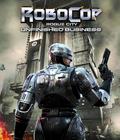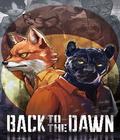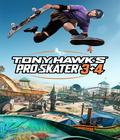For every popular sport, there's usually an annual Electronic Arts video game right around the corner. With the NHL season starting this month, EA Sports NHL 24 is out for PS5 and Xbox Series X|S, but is it worth it this year? EA's annual sports titles often struggle to introduce substantial improvements between releases. The NHL series has failed to bring meaningful additions for several years running. NHL 23 felt extra frustrating, with only a handful of additions that amounted to minor changes to the gameplay and existing game modes. NHL 24 makes more impactful changes in the gameplay department, but other areas, like solo game modes, are ignored for another year. The result is a mixed hockey bag that scratches the digital hockey itch but offers little more beyond that.
NHL 24 may not be the update that I've hoped for, but it's certainly the most focused update that the franchise has received in a while. Last year, we got last-chance puck movement, which enabled players to play the puck in clutch situations; it was appreciated but had a very minor impact on the gameplay.
The big addition this year is the Exhaust Engine, which should make plays on the ice more akin to their real-world counterparts. Extended time in the offensive zone and shots on goal now advance a pressure meter. Increased pressure drains energy from defenders and the goalie, and it eventually causes errors or desperation saves that increase scoring chances for the offensive team. This encourages and rewards puck possession in a much better way than before, and it provides avenues to almost force a goal in certain situations if you can keep up the pressure.
This is easily the change that has me most excited, since it emulates the on-ice action much better, especially when playing offline. However, there is still some balancing to be done. Currently, simply skating through the offensive zone while in puck possession for a certain amount of time is enough to rack up high amounts of pressure, which EA has announced will be addressed in upcoming patch updates.
Another issue is how much the new pressure system affects goalies in particular. When under high pressure, goalies can end up rolling around the net while trying to make a save. When it works, it's an accurate representation of the sport that adds an interesting layer to the gameplay formula. When it doesn't, it can feel like a game-changer in the worst possible way, especially during online play, where pressure plays can have a major impact on the overall outcome. I'm sure NHL 24 will eventually find the right balance for the Exhaust Engine feature, but for now, it's difficult to say how this will play after several patch updates.
As someone who enjoys playing offline in Franchise mode, this addition alone feels like a much-needed breath of fresh air and a logical addition. Goal situations often feel more realistic. Power play situations are much more tense for both teams and often end in a chaotic battle in front of the net. That's more often exciting and engaging than it is game-breaking.
The gameplay changes don't end there, though. The other much-appreciated addition in NHL 24 is Vision Passing. Holding passing now allows you to pass to specific teammates via the face buttons and to queue pass inputs for dizzying pass plays that span several players, similar to one-time shots. This new passing feature is great on its own, as it provides more control over how you distribute passes. It really shines when used with the new Exhaust Engine, as it provides more opportunities for your team to move the puck in the offensive zone while applying pressure. Passing and offensive zone improvements are not as balanced as I'd like them to be, but they're both huge additions that noticeably change the experience for the better. For what it's worth, these two additions alone are more substantial than anything the series has seen in years.
Beyond that, NHL 24 claims to have made further improvements to physical player contact, with a new physics-based system that feels very similar to how checking worked in past entries. I struggle to call this year's change a definite improvement. There are still players flopping around in weird poses after some checks, and the addition of bursting the glass of the rink or pushing a player onto the player bench is not enough to call the new physics-based system an improvement. It's also technically not new; it just skipped a few years.
Maybe you don't care for body checks too much and prefer to avoid unnecessary physical contact. If that's the case, then the new control scheme could help by simplifying the inputs needed to pull off signature moves like "The Michigan." It significantly streamlines advanced player controls to make them more accessible; it has advantages for newcomers, but returning players and their muscle memory may struggle with the remapping a bit.
While I'm pleasantly surprised by the number of changes introduced this time around, the continued neglect of single-player modes is still frustrating. Be a Pro and Franchise modes are unchanged this year, with only a few notable changes for its online modes, HUT and CHEL. The biggest change is that both modes now support cross-play between same-gen consoles, which should improve long-term matchmaking due to the expanded player pool. HUT also added improvements to offline challenges and goalie controls, making both more fun to interact with, but that's it. If the gameplay improvements aren't enticing, there is little else in terms of new content to sink your teeth into, especially if you're not planning to buy into HUT's pricey pay-to-win mode.
The presentation in NHL 24 is solid as expected — because it is mostly unchanged. The new co-presenter, Cheryl Pounder, finally adds a new voice to the mix, but the content still sounds rather similar. There are also a few additions that I didn't enjoy as much, such as the new unskippable goal celebration moments. It's not even that they're unskippable, but that they dim the stadium lights and put the scorer in a spotlight to fire off a celebration animation. In a game that aims to be a simulation of the sport, these celebrations seem oddly out of place, and I wouldn't mind to see them gone by the time NHL 25 skates around.
Otherwise, NHL 24 is mostly in the same state it was a year ago. Some new player faces have been added to increase the number of players with their likeness in the game. Not all of them resemble their real-life counterparts, though, which can sometimes detract from the experience. It felt like haptic feedback on the PS5 has been toned down, but the default was a touch too intense in previous entries. On a more positive note, while the audience is still the same as it was five years ago, it does sound much more dynamic. Again, part of that is the new Exhaust Engine system, but getting a crowd chanting, booing, or otherwise excited during tense plays based on the new pressure system gets you pumped during a match and feels much more reactive. Now, if they could just update the crowd visuals, too ….
EA Sports NHL 24 adds quite a lot this year around for an NHL game. The Exhaust Engine and Vision Passing are welcome and profound additions to the gameplay, even though the overall balance doesn't feel quite right yet. Beyond that, improvements are slim, especially if you're predominantly playing offline. Be a Pro and Franchise modes see a few adjustments to the micro-transaction-powered online modes. If you've skipped NHL games for several years, you're likely going to enjoy this iteration. If not, you'd better wait another year or two. NHL 24 is a step in the right direction, albeit a small one, but it doesn't justify the full, next-gen price.
Score: 6.8/10
More articles about EA Sports NHL 24











 EA Sports NHL 24 unleashes the intensity of hockey with all-new exhaust engine and physics-based contact.
EA Sports NHL 24 unleashes the intensity of hockey with all-new exhaust engine and physics-based contact.


